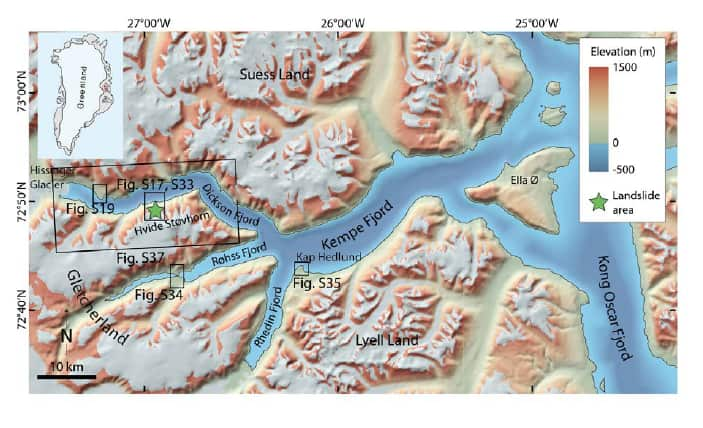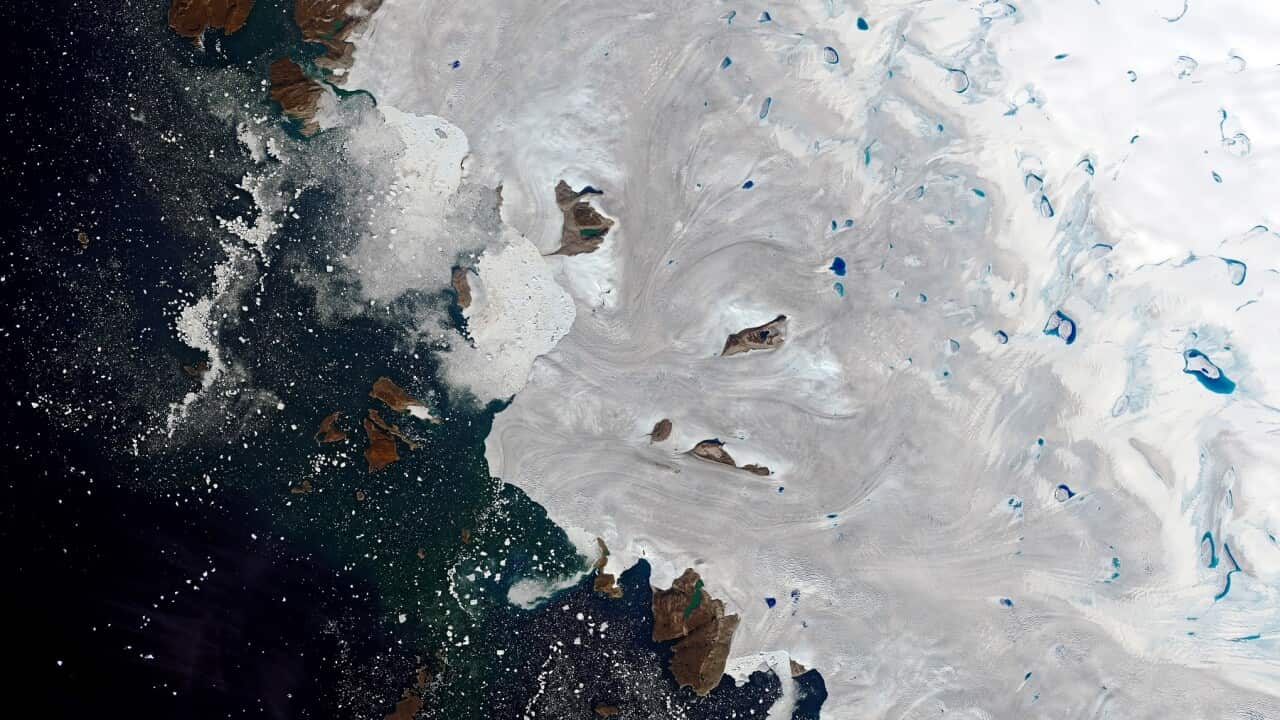Key Points
- A landslide in Greenland last year caused the Earth to vibrate for nine days.
- A year later, researchers have attributed the seismic event to climate change-induced temperature increases.
- Landslides “are increasing due to climate change” scientist Amelie Meyer told SBS News.
Researchers were initially baffled by what caused the seismic event. A year later, scientists say they’re now able to explain what happened.
A seismic hum
In September 2023, seismometers around the world began to detect a seismic signal of 10.88 millihertz originating from East Greenland.
The September mega-tsunami wave was trapped in the narrow fjord (about 38km long and 3km wide) — resonating back and forth for days.

The rock and ice avalanche crashed into the fjord at over 160km per hour, triggering a mega-tsunami that sloshed back and forth for days. Credit: Science
The sloshing movement generated so much energy it caused detectable tremors globally.
But while incredibly rare, this may not be the last event of its kind.
‘Landslides are increasing’
“Landslides happen a lot and are increasing due to climate change,” Amelie Meyer, a senior scientist at the University of Tasmania, said.

Climate change is degrading permafrost and thinning glaciers, Dr Meyers said, increasing the frequency and severity of landslide events. Source: Getty / Galen Rowell
“As temperatures rise, the altitude at which you have permafrost (frozen ground) is also rising. Those areas are then exposed to above-freezing temperatures at certain times of the year,” Meyer told SBS News.
“There are some parts of the summer where you would avoid these areas, but now climate change is causing many to be unsafe all year round.”
